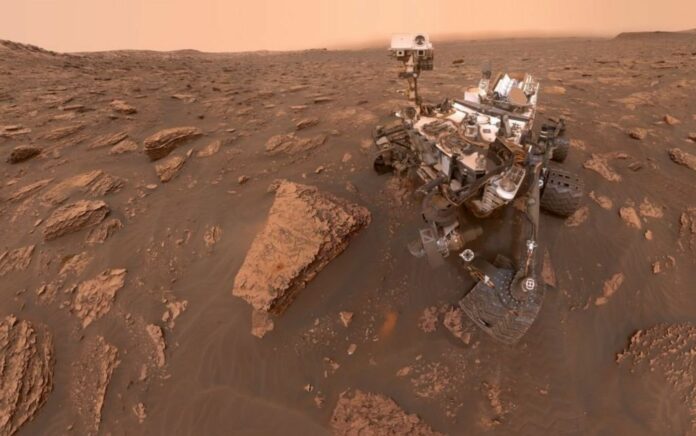In 2014, NASA’s Mars rovers discovered manganese oxides in rocks in the Gale and Endeavor craters on Mars. This led some scientists to think that Mars’s atmosphere may have had more oxygen billions of years ago.
Scientists said that the minerals probably needed a lot of water and oxygen to form. Using what they had learnt from Earth’s geologic record, scientists determined that the existence of manganese oxides suggested that Mars had undergone periodic spikes in atmospheric oxygen in the past, prior to its current low levels.
New experimental research from Washington University in St. Louis, however, contradicts this notion.
Under Mars-like circumstances, scientists found that manganese oxides may rapidly develop in the absence of oxygen. The authors also demonstrated that manganese oxidation is not feasible in the carbon dioxide-rich atmosphere predicted on ancient Mars using kinetic modeling.
“The link between manganese oxides and oxygen suffers from an array of fundamental geochemical problems,” adds the corresponding author Jeffrey Catalano.
Kaushik Mitra, a postdoctoral research associate at Stony Brook University who did this work as a part of his graduate research at Washington University, is the study’s primary author.
Compared to Earth, Mars is a planet that is rich in the halogen elements chlorine and bromine.
“Halogens occur on Mars in forms different from on the Earth, and in much larger amounts, and we guessed that they would be important to the fate of manganese,” points out Catalano.
Catalano and first author Kaushik Mitra used chlorate and bromate, which are the most common forms of these elements on Mars, in the lab to oxidize manganese in water samples they made to look like fluids on the surface of Mars in the past.
“We were inspired by reactions seen during chlorination of drinking water,” Catalano adds. “Understanding other planets sometimes requires us to apply knowledge gained from seemingly unrelated fields of science and engineering.”
Researchers discovered that the rate at which dissolved manganese in water was transformed into manganese oxide minerals by halogens was thousands to millions of times quicker than by oxygen. Also, scientists believe that the early surface of Mars was slightly acidic, and that bromate makes manganese oxide minerals more quickly than any other oxidant. Many of these circumstances prevent oxygen from ever becoming manganese oxides.
“Oxidation does not necessitate the involvement of oxygen by definition,” Mitra adds. “Earlier, we proposed viable oxidants on Mars, other than oxygen or via UV photooxidation, that help explain why the red planet is red. In the case of manganese, we just did not have a viable alternative to oxygen that could explain manganese oxides until now.”
The new findings challenge basic concepts about early Mars’ habitability, which are a major inspiration for current NASA and European Space Agency research.
However, scientists argued that the lack of atmospheric oxygen in the past is not conclusive evidence against the existence of life.
“There are several life forms even on Earth that do not require oxygen to survive,” Mitra adds. “I don’t think of it as a ‘setback’ to habitability — only that there was probably no oxygen-based lifeforms.”
Extremophile creatures that can endure in halogen-rich environments, such as the bacteria and single-celled organisms that flourish in the Dead Sea and the Great Salt Lake on Earth, may also exist on Mars.
“We need more experiments conducted in diverse geochemical conditions that are more relevant to specific planets like Mars, Venus, and ‘ocean worlds’ like Europa and Enceladus in order to have the correct and full understanding of the geochemical and geological environments on these planetary bodies,” Mitra adds. “Every planet is unique in its own right, and we cannot extrapolate the observations made on one planet to exactly understand a different planet.”
The results of the experiment were published today in Nature.
Image Credit: NASA/JPL-CALTECH/MSSS / HANDOUT/Anadolu Agency/Getty Images
